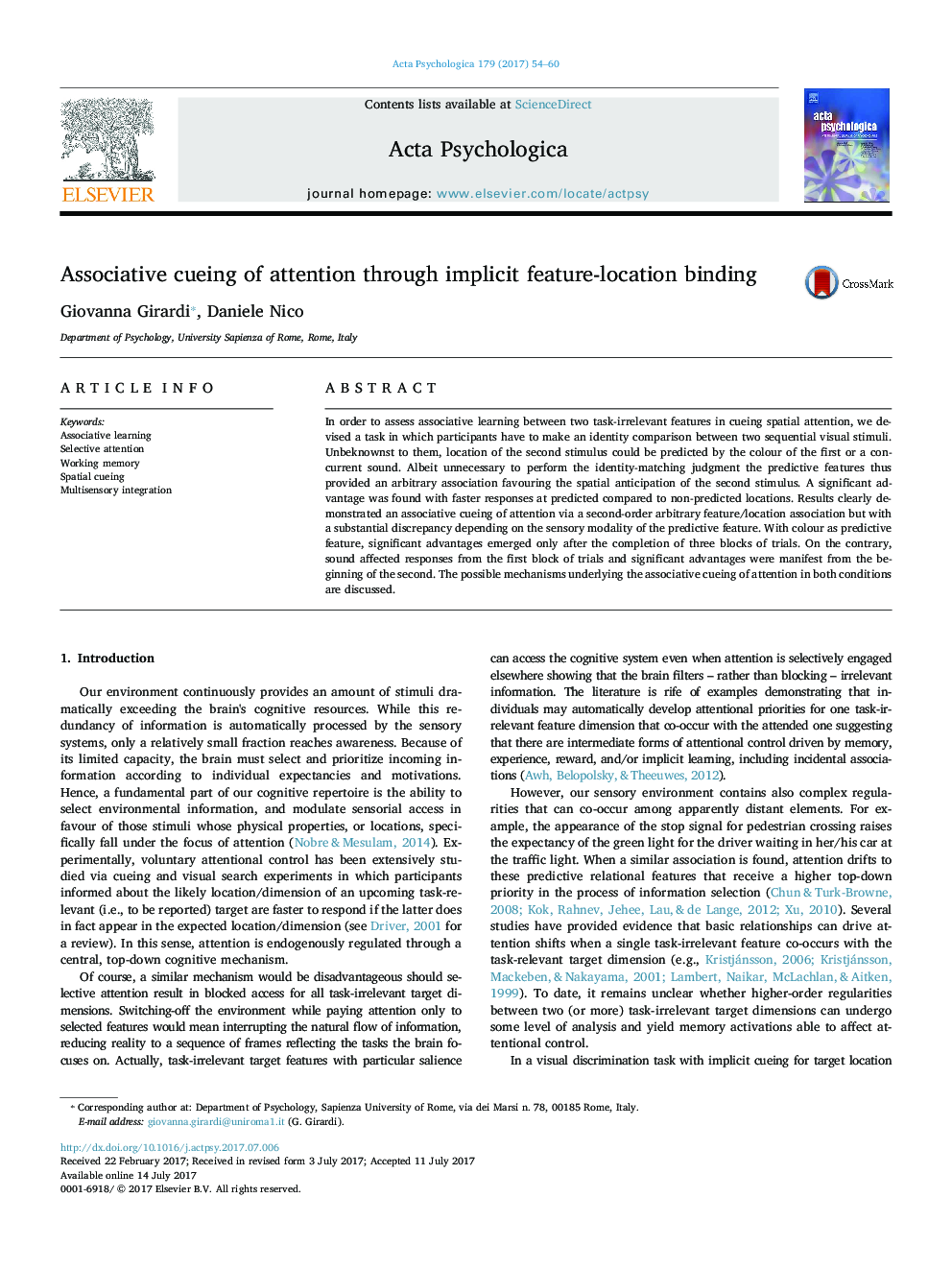| Article ID | Journal | Published Year | Pages | File Type |
|---|---|---|---|---|
| 5040222 | Acta Psychologica | 2017 | 7 Pages |
â¢We investigated associative cueing between two task-irrelevant features.â¢In a visual matching task, a feature of the 1st stimulus cued for location of the 2nd.â¢Cueing via colour/location association became effective after long practice.â¢An early benefit emerged instead with tone/location association.â¢Results demonstrate modality-dependent attentional cueing of second-order associations.
In order to assess associative learning between two task-irrelevant features in cueing spatial attention, we devised a task in which participants have to make an identity comparison between two sequential visual stimuli. Unbeknownst to them, location of the second stimulus could be predicted by the colour of the first or a concurrent sound. Albeit unnecessary to perform the identity-matching judgment the predictive features thus provided an arbitrary association favouring the spatial anticipation of the second stimulus. A significant advantage was found with faster responses at predicted compared to non-predicted locations. Results clearly demonstrated an associative cueing of attention via a second-order arbitrary feature/location association but with a substantial discrepancy depending on the sensory modality of the predictive feature. With colour as predictive feature, significant advantages emerged only after the completion of three blocks of trials. On the contrary, sound affected responses from the first block of trials and significant advantages were manifest from the beginning of the second. The possible mechanisms underlying the associative cueing of attention in both conditions are discussed.
